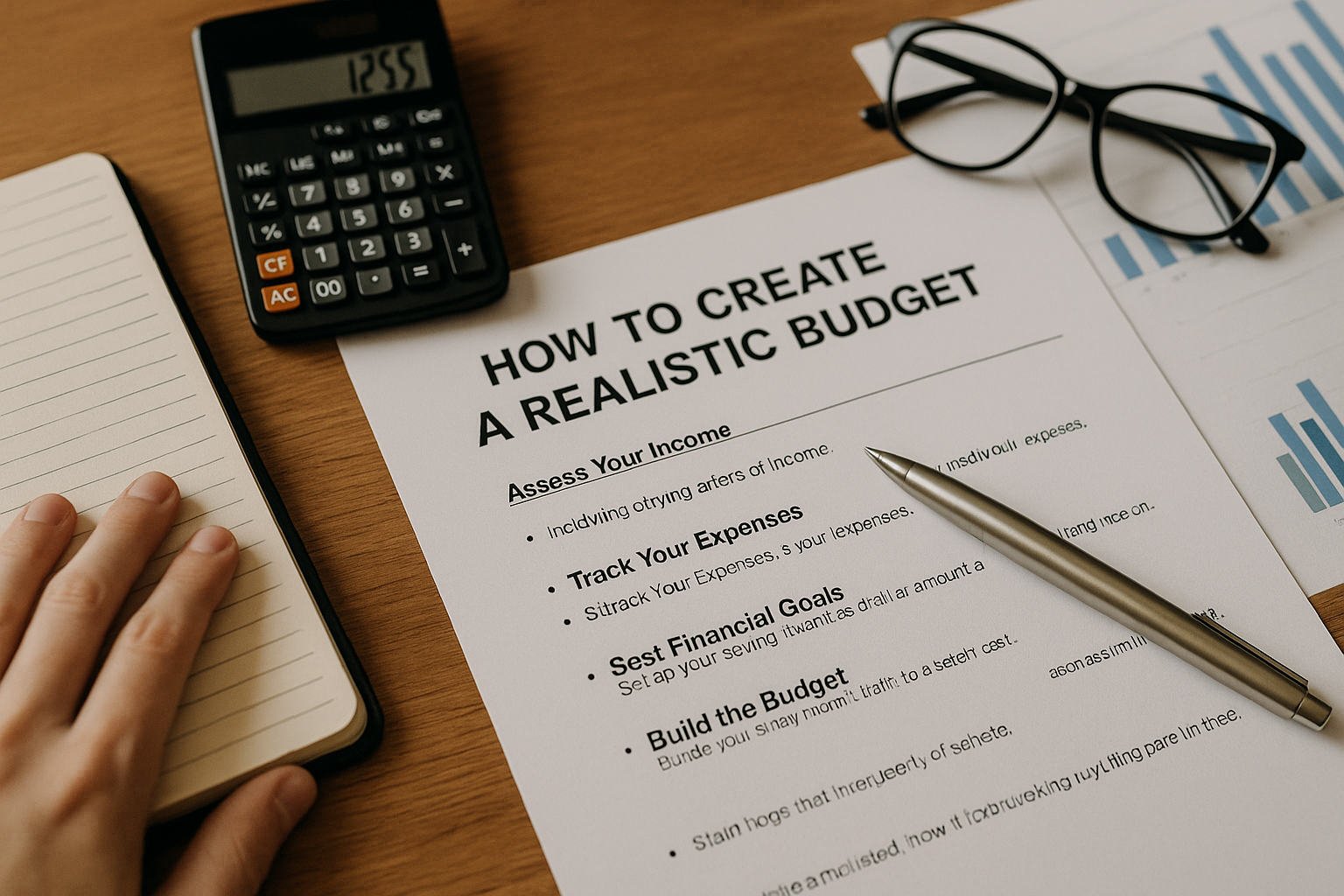Creating a budget is one of the most powerful ways to take control of your finances. A well-structured budget helps you understand where your money goes, prioritize essential spending, and work toward financial goals like saving, investing, or paying off debt. However, building a budget that actually works—and sticking to it—requires more than writing down numbers. It takes planning, consistency, and the willingness to adapt.
Why Budgeting Matters
Many people avoid budgeting because they believe it’s too restrictive or only necessary when money is tight. In reality, budgeting gives you freedom. It helps you make intentional decisions with your money instead of wondering where it all went. Budgeting also reduces stress, as you’ll have a clear picture of what you can afford, what you’re saving for, and how to avoid falling into debt.
Step 1: Assess Your Income
Start by identifying all sources of income. This includes your primary job, side hustles, freelance work, and any passive income like dividends or rental earnings. Make sure to calculate your net income, which is the amount you take home after taxes and other deductions. This is the actual amount available to cover your expenses and savings goals.
Step 2: Track Your Expenses
Before you create a budget, you need to understand how you currently spend your money. For at least one month, track all of your expenses—every coffee, subscription, and utility bill. Use budgeting apps, spreadsheets, or even a notebook. Categorize your spending into fixed expenses (like rent, insurance, and car payments) and variable expenses (like groceries, entertainment, and dining out). This step often reveals spending habits you didn’t realize you had.
Step 3: Set Financial Goals
Your budget should be designed around your goals. These could include paying off debt, building an emergency fund, saving for a vacation, or investing for retirement. Define your short-term goals (under 1 year), mid-term goals (1–5 years), and long-term goals (5+ years). Having clear objectives gives you motivation and helps determine how much you need to save each month to reach them.
Step 4: Build the Budget
Now it’s time to allocate your income. Use a structure that works for your lifestyle. One popular method is the 50/30/20 rule: 50% of your net income goes to needs, 30% to wants, and 20% to savings and debt repayment. Alternatively, use zero-based budgeting, where every dollar is assigned a specific job. Start with your essential expenses, then allocate funds toward your goals and discretionary spending. Don’t forget to include irregular expenses like annual fees, birthdays, or car maintenance.
Step 5: Automate and Adjust
Automation is key to staying on track. Set up automatic transfers to savings accounts and auto-pay for recurring bills. This reduces the temptation to spend and ensures that your financial priorities are funded first. Review your budget monthly to see what’s working and what isn’t. Life changes—your budget should too. Be flexible and make adjustments when necessary without feeling like you’ve failed.
Common Budgeting Mistakes to Avoid
Avoid underestimating variable expenses or forgetting irregular costs. Don’t rely on credit cards to fill budget gaps, and avoid being overly strict, which can lead to frustration and burnout. Budgeting should be sustainable—not punishing. Give yourself room for occasional fun so that your budget feels empowering, not limiting.
Staying Motivated
Keep your goals visible. Use a whiteboard, a note on your phone, or a printed tracker to visualize your progress. Celebrate small wins, like saving your first $500 or paying off a credit card. Involve your family or partner in the process for added support and accountability. Remember, budgeting isn’t about being perfect—it’s about being consistent.
Final Thoughts: Make Your Budget Work for You
A realistic budget is a cornerstone of financial success. It helps you live within your means, build wealth, and feel confident about your future. By assessing your income, tracking your spending, setting clear goals, and reviewing your plan regularly, you can create a system that supports the life you want. Stick with it, stay flexible, and over time, budgeting will become second nature—and one of your greatest financial tools.
